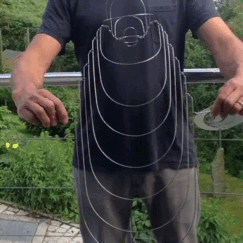“According to Williams, however, the recent attention given to spoken word as a distinct genre within the arts is more a return to something that has deep and rich roots in our society: “The resurgence of poetry is cyclical and perpetual. It’s always engaged a new generation of youth who have brought it back to the forefront of culture and put new terms on it, whether it’s beat poetry, bebop poetry, slam poetry – there’s always been these resurgences. But it’s ancient.”
Music can lift layers of confusion, dancers’ brains react more quickly to it than professional musicians, and empaths process it differently
“Turns out that ASMR is pretty special. According to a recently published study in The Journal of Prevention of Alzheimer’s Disease (catchy name!), the part of your brain responsible for ASMR doesn’t get lost to Alzheimer’s. Alzheimer’s tends to put people into layers of confusion, and the study confirms that music can sometimes actually lift people out of the Alzheimer’s haze and bring them back to (at least a semblance of) normality… if only for a short while. ASMR is powerful stuff!”
Hearing silent images is the most common synesthesia, UCLA transferred snail memories, and I hear “Yanny”
“Up to one in five people may show signs of a synesthesia-like phenomenon in which they ‘hear’ silent flashes or movement, according to a new study from City, University of London.
While the effect is barely known to science, the researchers found that this ‘visually-evoked auditory response’ (vEAR) is far more common than other types of synesthesia – such when certain sounds elicit a specific colour – with flashing lights and motion evoking vivid sounds.
The survival of this association may also explain other links between sound and vision, such as why we like to listen to music synchronised with flashing lights or dance.
…While other typical synesthesias are estimated to have an overall prevalence of 4.4 per cent, the vEAR effect has recently gained some prominence on social media following the rise of ‘noisy GIFs’, and in particular the ‘thudding pylon’ GIF which received thousands of retweets.”
An undiagnosed love story, autistic vision focuses on the details, and an auditory dimension augmented reality experience
“…The turning point came with a startling realisation: we don’t argue. Ever. Early on in our marriage I was terrified of any sign of anger on his part. Even mild irritation left me quaking. I would shut down and not respond. In the end, we found a way to be and we haven’t had a cross word for more than a decade.
Years ago, Tim would snap over something small and I would retreat upstairs and not come down until I knew he had either gone out or had calmed down. I simply didn’t engage. Now he no longer even considers getting cross; he knows nothing will come of it. Problems are discussed calmly and solutions negotiated. Anything else seems bizarre to me. Why would anyone want to scream and shout at the person they love?”




